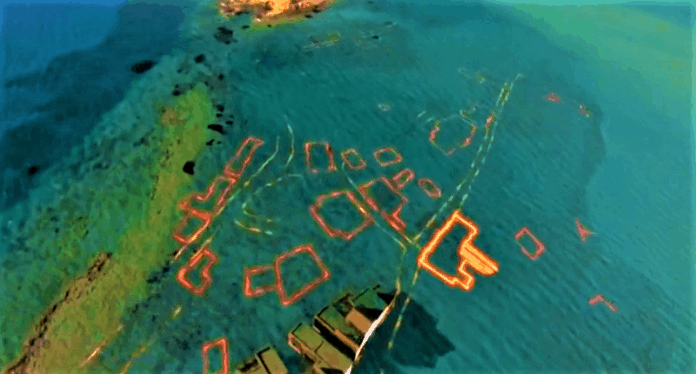Discovered in 1967 by Nicholas Flemming and mapped in 1968 by a team of archaeologists from Cambridge, Pavlopetri (Παυλοπέτρι) is located between the islet of Pavlopetri and the Pounta coast of Laconia on the Peloponnese peninsula.
Pavlopetri,which literally translates to ”Paul’s Stone,” is one of the oldest submerged cities, as well as the oldest in the Mediterranean sea. The settlement contains both Neolithic and Bronze Age material and the town is believed to have flourished in the period between 3000 and 1000 years BC. Dr Jon Henderson, associate professor of underwater archaeology at the University of Nottingham said in 2009:
“There is now no doubt that this is the oldest submerged town in the world. It has remains dating from 2800 to 1200 BC, long before the glory days of classical Greece. There are older sunken sites in the world but none can be considered to be planned towns such as this, which is why it is unique.”
Marine geologists have yet to work out why the settlement sank. Theories include sea level changes, ground subsidence as the result of earthquakes, or a tsunami. Dimitris Sakellariou, at the Greek Institute of Oceanography said:
“It is very likely a combination of the first two. As the world’s oldest submerged city it is truly amazing. It not only shows how people lived at the time is also of great interest to natural scientists because the waters around it are so shallow.”
Aided by digital technology archaeologists discovered a world of buildings, courtyards, main streets, rock-cut tombs and religious structures. It is also believed that the town was the centre of a thriving textile industry (from the many loom weights found in the site).
The underwater ruins of Pavlopetri are an example of underwater cultural heritage that could benefit from the protection of the 2001 UNESCO Convention on the Protection of the Underwater Cultural Heritage. Pavlopetri is important not only to the Greek people, but it is part of the cultural heritage of the entire world.
For many more images, go here.

 Khaire! Would you buy me a coffee?
Khaire! Would you buy me a coffee?
No comments:
Post a Comment